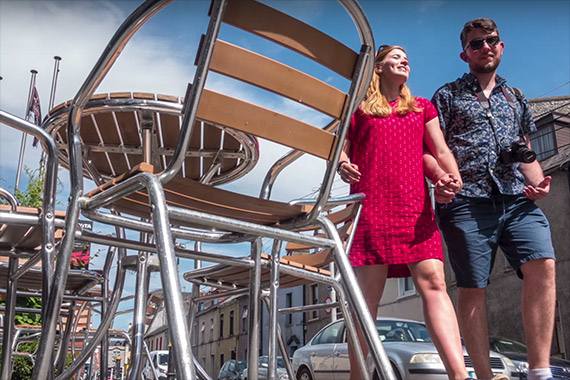At one point or another, almost all photographers have experienced periods of creative block. Though incredibly frustrating, lulls in the artistic process are completely natural and do not indicate a loss of the “spark” you once had. Nevertheless, navigating your way out of a block can be a long, arduous process. Here, Marcin Lewandowski offers advice on feeding your imagination and getting yourself back behind your camera’s viewfinder:
Games and experiments can be some of the most effective ways to exercise your mind and form new ideas. Using resources such as The Photographer’s Playbook, Lewandowski has discovered and devised the following activities to inspire his students as well as challenge himself as an artist.
1. Play with Numbers
On November 11, 2011 (11/11/11), Lewandowski commemorated the unusual date by challenging himself to take a photograph every 11 minutes between 11am and 11pm. Although the next 11/11/11 may not occur for another 95 years, there are numbers surrounding us in things like dates, times, prices, and addresses. Even the settings of a camera are relegated to numbers. This exercise can be as simple as shooting everything at aperture f/8 with a shutter speed of 1/8 second to see what sort of results occur.
2. Switch Perspectives
Photographers often keep their cameras close to eye level. However, this is only one way of seeing things. By getting close to the ground and shooting upwards, you may be able to recreate the perspective of a child or pet. Conversely, climbing up to a higher vantage point and looking downward can replicate a bird’s eye view. Even snapping the shutter at the level of your hip can yield interesting results. By physically altering the way in which you’re looking at things, boring, uninspiring subjects can often be transformed into something utterly mesmerizing.
3. About Face (Turn Around)
Interesting images can be found by simply looking the other way. The next time you stop to take a picture, turn around 180 degrees and see what’s going on right behind your back. If you’re shooting a specific object or model, position them behind you as well. Not only will you have a new background to experiment with, you may also observe differences in the way light falls upon a subject.
4. Focus on Reflections
Although many people have admired the beauty of a reflection in water at some point, very few photographers focus primarily on reflections. In fact, much of the time we disregard reflections entirely. However, photographers can add layers of depth to an image and create something surreal or abstract by simply observing the reflections scattered throughout everyday life. Keep your eyes peeled for what lies in antique mirrors, storefront glass, automobile bumpers, rain puddles, and much more.
5. Location Study
Sometimes all it takes to get the creative juices flowing is some extra attention to a specific place. Whether it’s a local city landmark, a remote patch of wooded area, or your own backyard, there are sure to be details that most would overlook. By limiting yourself to a specific small area, you are forced to consider the environment, search for unique image opportunities, and experiment in ways you might not otherwise.
Simple to understand and easy to adapt, these activities are appropriate for photographers in all stages of their career. No longer does the creative block have to slow down your workflow. By simply loosening up and embracing a new strategy, an antidote to inaction is easier to attain than ever before.
“By constraining yourself to a strictly limited set of parameters, you will paradoxically open the mind for new possibilities and foreseeing situations in a new light.”
Like This Article?
Don't Miss The Next One!
Join over 100,000 photographers of all experience levels who receive our free photography tips and articles to stay current:







I really like the idea of the different perspective or changing your perspective. For instance, I’ve always wondered what my dogs feels like and sees. So maybe like using B&W and being around ground level could be sort of a cool idea!
I really like the idea of the changing the perspective. I’ve always wondered what my dog feels like. Maybe even adding in the elements of like B&W if you’re shooting from the POV of a dog could be a cool idea!